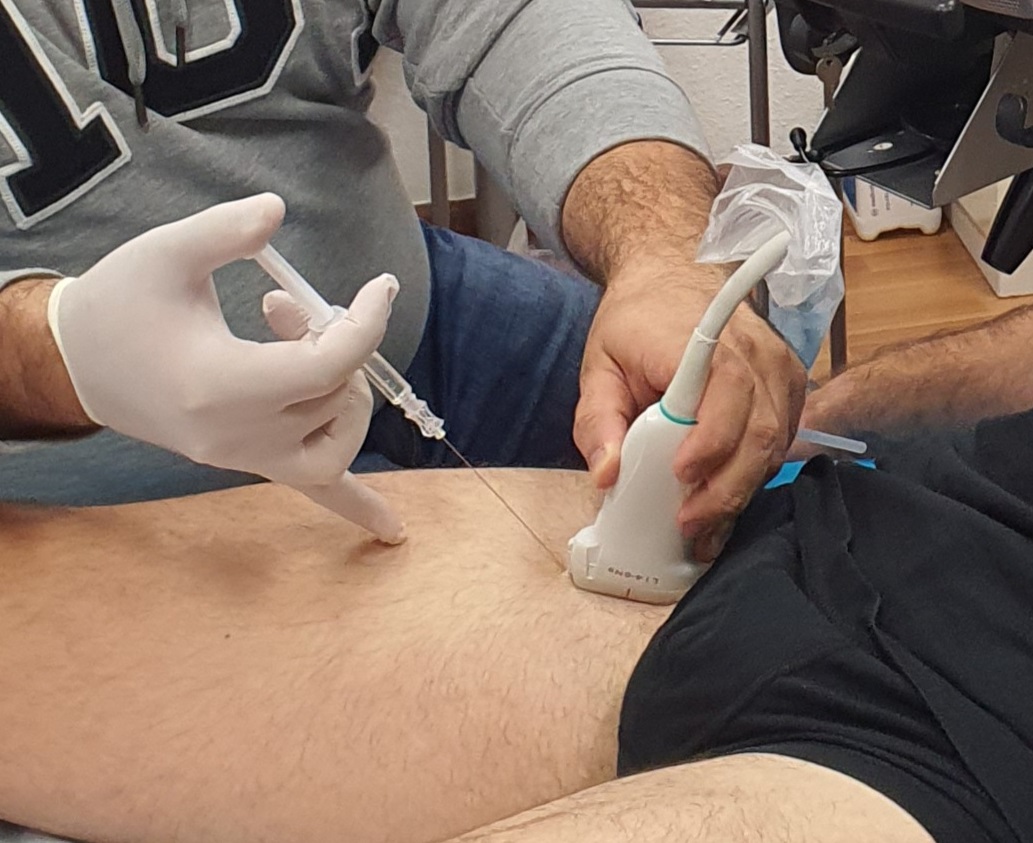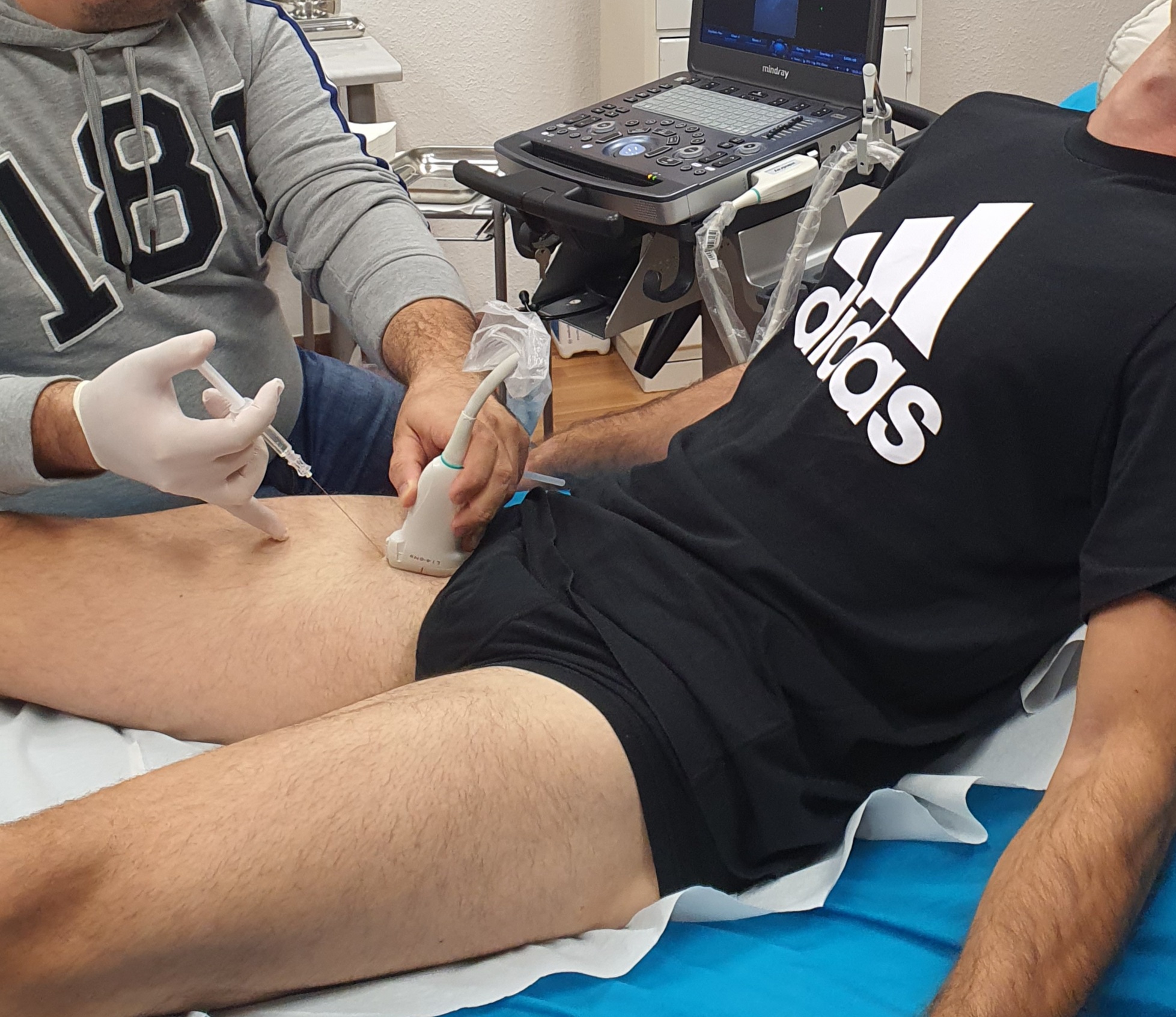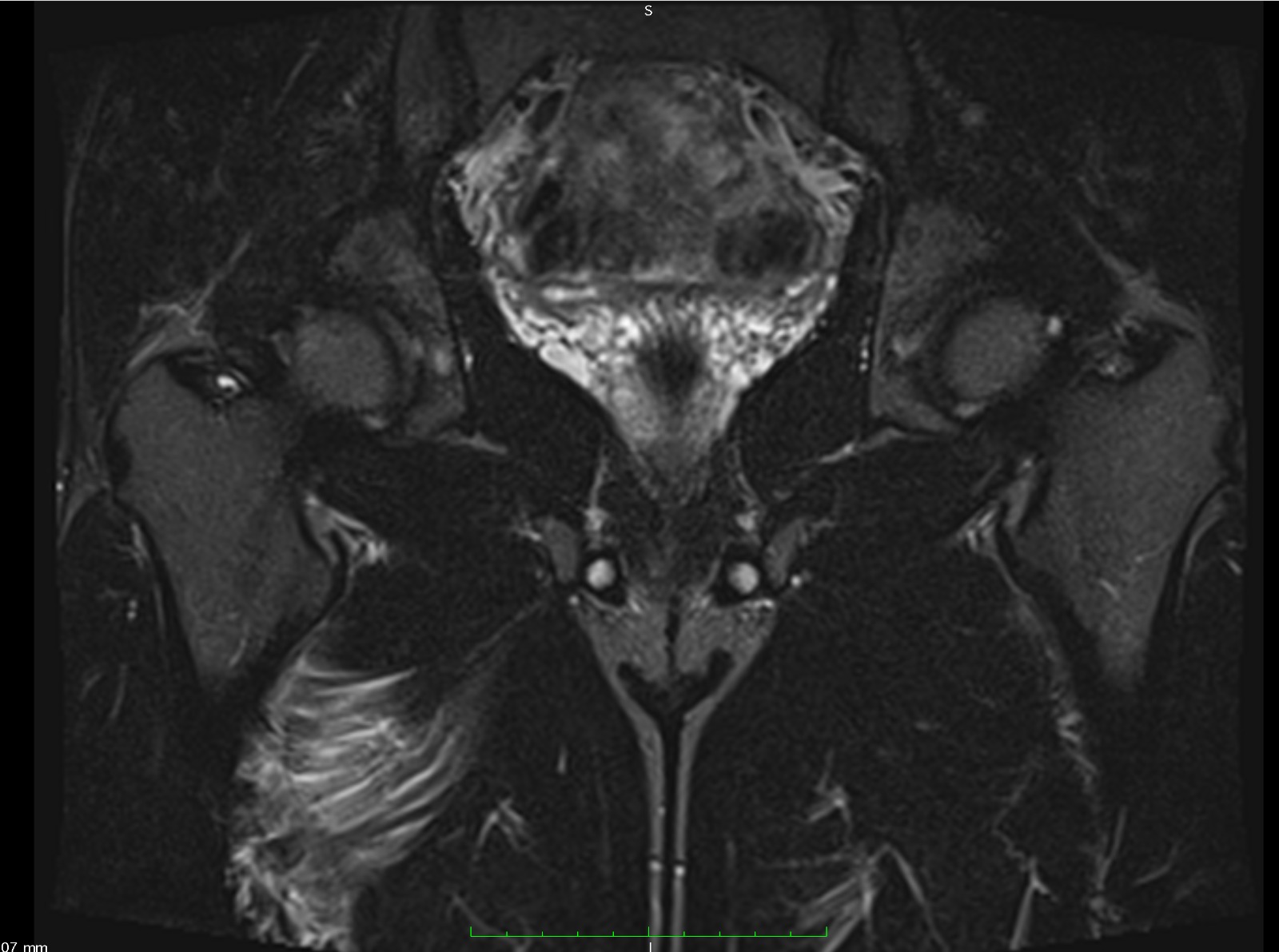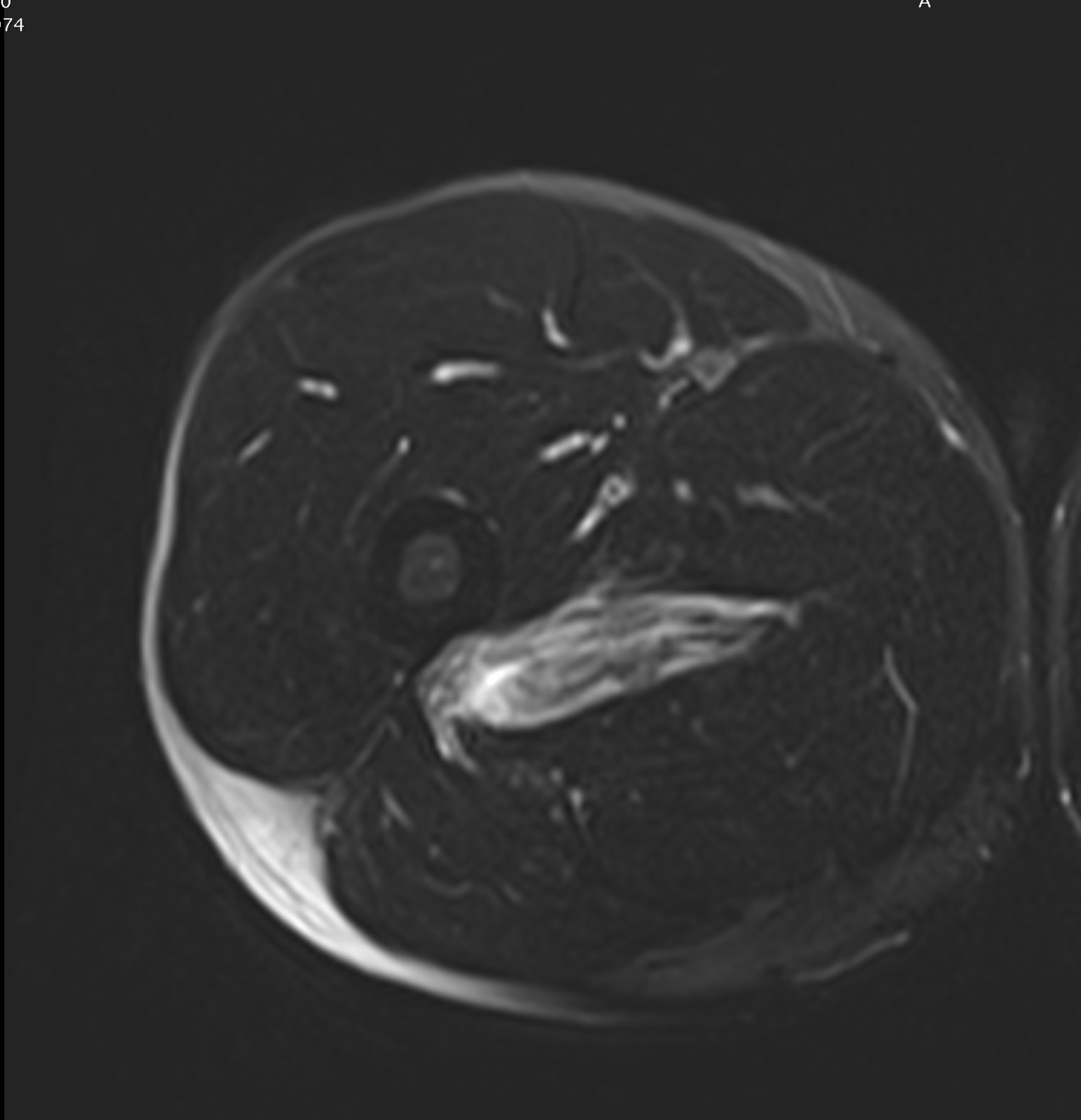At start of a soccer match just a few minutes after the beginning, player felt a tension in his right adductor. He felt no pain or discomfort in his adductor this season and he has no chronic problems with his adductors or pubic bone. Pain started as a sharp sensation during change of direction, but straight runs were painless. He continued playing until he tried to jump and on ground contact pain exploded. He described it as if someone stabbed a knife in his leg, near the groin. He quitted the match immediately.
MRI was done the day after and it showed injury to adductor magnus insertion to femur. Injury was wrongly graded as a grade 1-2 stretch as there was no big muscle tear, more like continuous muscle injury with peak at distal femur insertion. Luckily there was no avulsion fracture.
MRI of adductor magnus injury taken the following day (01.11.2021).
We started immediate therapy, but the greatest challenge was the depth of the injury more than 5 cm in the muscle. For that we have to use special long needles, usually used for lumbar puncture. It is hard to watch but in fact quite painless procedure if done properly with right technique. Adequate knowledge of anatomy and topography is needed to avoid major nerves and blood vessels in the area.

Ultrasound guided injection to adductor magnus
In addition to the injection therapy, physical therapy and exercise program is done. Exercise program is very low intensity just to provoke muscle fibers to regenerate and not strong enough to tear them and make more damage. Control MRI is planned 6 days after the injury.
Control MRI was done 8 days after the injury. Results were astonishing, practically complete regression of the injury with only small part of injury remaining. Patient is advised to continue with exercise program and gradually start running. Return to full activity and ability to play soccer match is expected within 7-10 days, depending on his personal assessment.

Comparation 8 days pot injury of adductor magnus, before(left) and after(right) the therapy
Why so long to return to match if the muscle is fully healed, you might ask. When injury happens without known mechanical cause, it usually means that the muscle is weaker then needed and it brakes spontaneously. After full healing even thou muscle is fully functional, it is even weaker than before the injury and we must give him time to catchup with the rest of the muscles. Too quick return to play after the injury even when muscle is fully healed usually leads to repeated injury.



